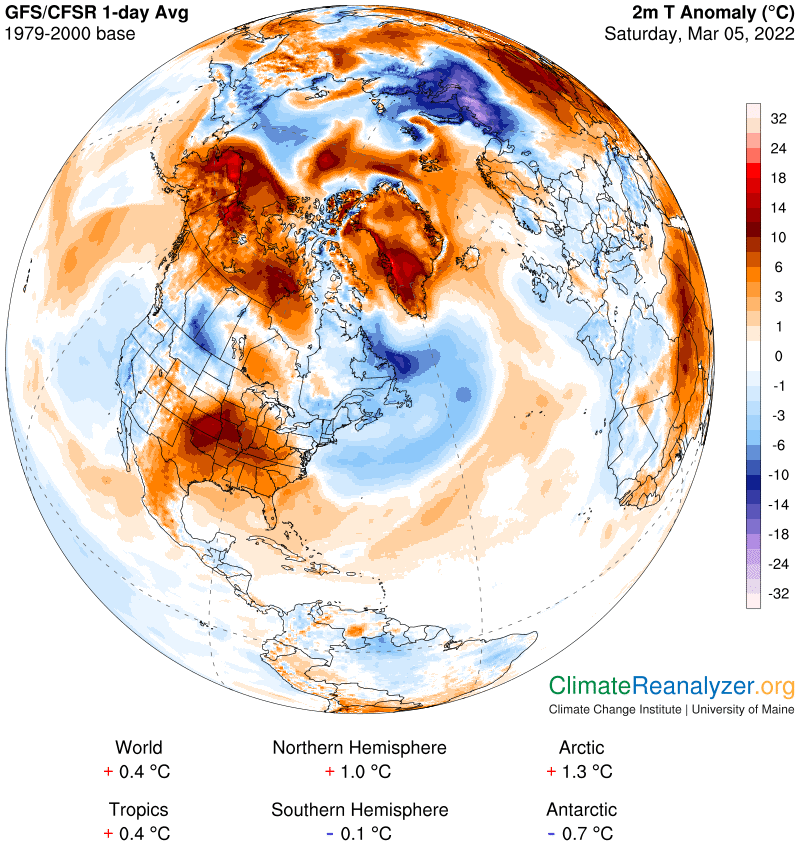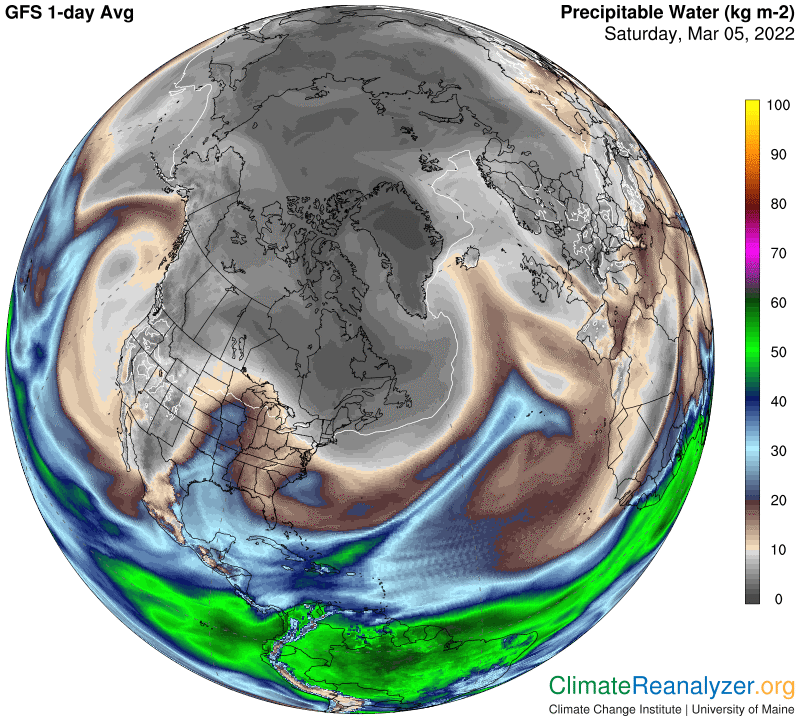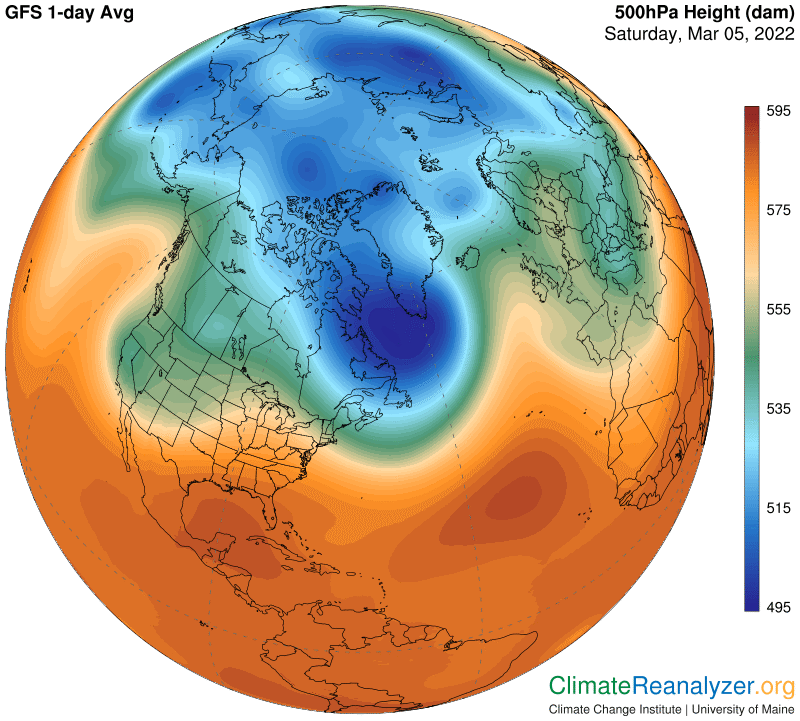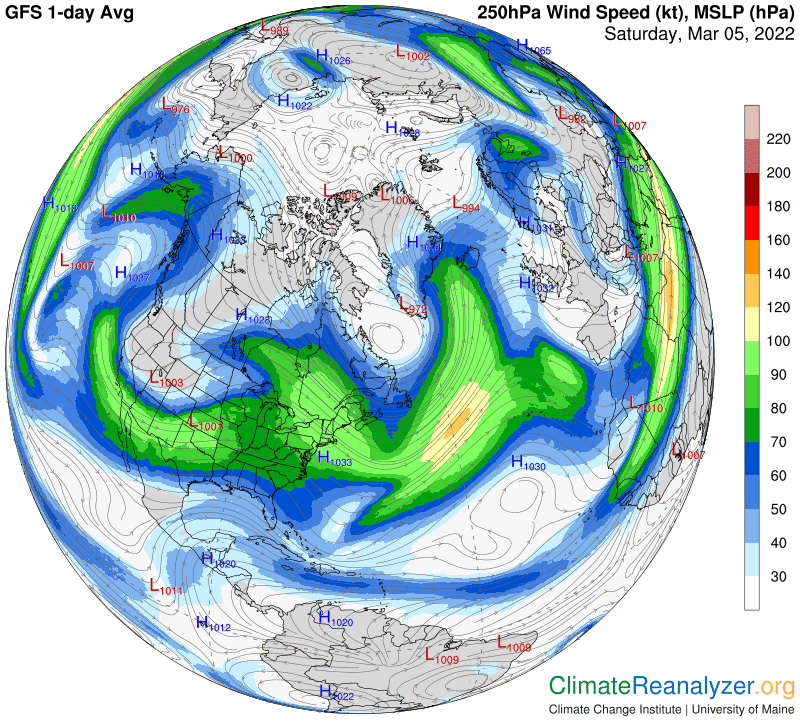Abbreviated climate letters will be posted on weekends from now on while daily changes in Arctic temperature anomalies are being investigated. These original image collections could prove to have value as archives. As described in recent letters, the Arctic’s air is growing warmer at a rate four times greater than that of the globe as a whole, and twice that of the Northern Hemisphere. I have noticed that the warming pattern is highly irregular with respect to daily results. Some days, like today, have results below this rapidly moving trend while others are well above, as observed on several days this past week. There must be a reason behind such a high degree of irregularity, and I have discovered a plausible explanation of the source—the highly irregular pattern of greenhouse energy effects generated by the spasmodic presence of precipitable water (PW) concentrations in the high altitude part of the atmosphere directly above all Arctic surfaces. A complete theory of the processes involved has been developed over the past two years and is contained within these letters, with many illustrations. Daily testing is now underway, finishing its first full week. Here are today’s principal images, starting with the patchy anomalies:
The most interesting anomaly today is the warm one between Svalbard and the North Pole. The next map will show how it developed as a result of PW penetration:
High-altitude air pressure gradients, marked off by color coding on the next map, have a major role in causing so much irregularity. The large blue bulb extending well to the south has shifted several hundred miles to the east since yesterday, while keeping its same shape. Similar eastward shifts, though usually not quite so perfect in holding shape, can be seen daily in almost all parts of the configuration. A pattern of low-kg value PW shifted right along with the blue bulb shape today (above map), and a large area of cold anomaly (top map) did the same. They all kept the very same shape as they moved, an indication of close relationships:
The jetstream wind pathway that forms along all the borders of the blue zone must not be overlooked, since its position has shifted just like the others. It also has a close relationship with the others. In this example it acts by holding off potential penetration of surrounding PW streams and fragments, along with their greenhouse energy effect, into the interior of the deep blue zone.
Carl



